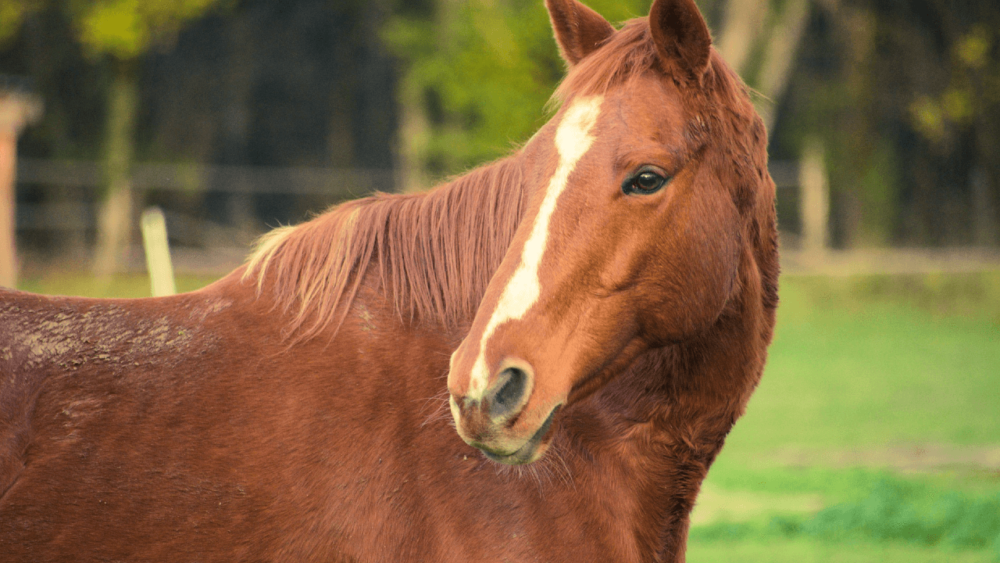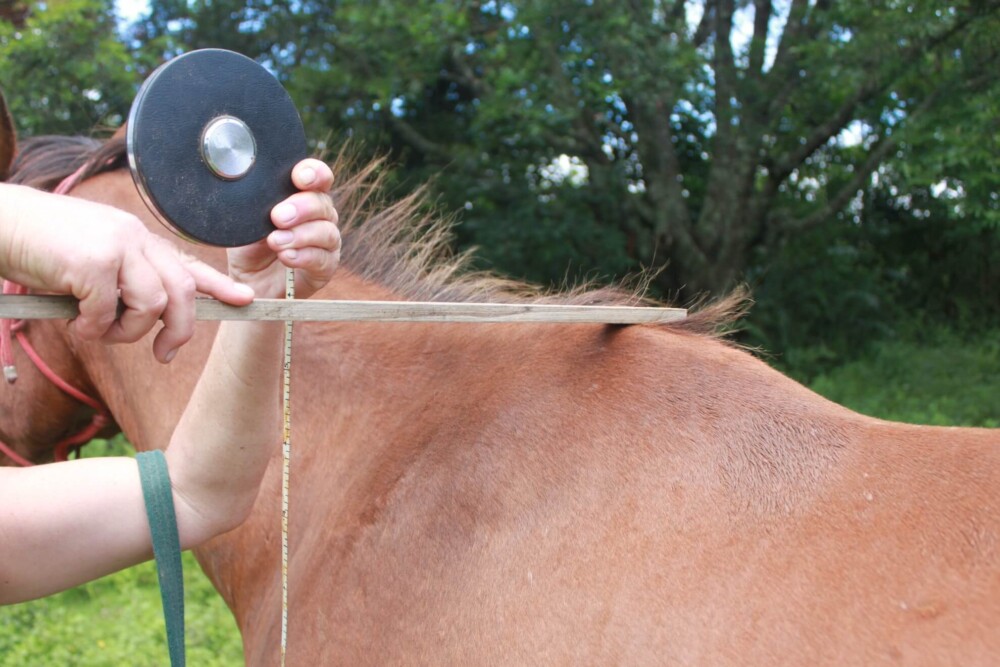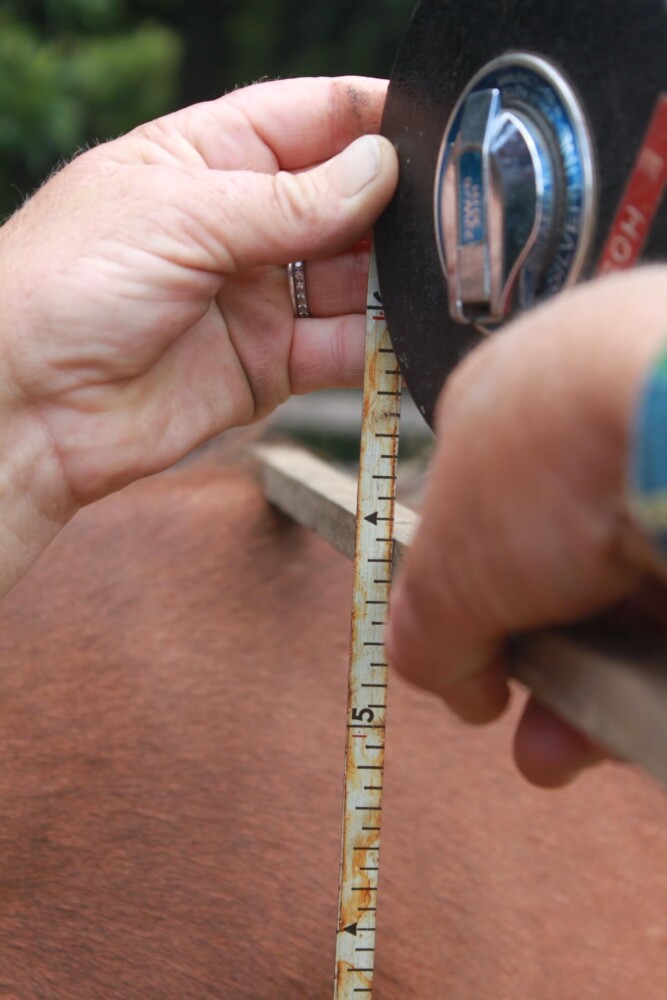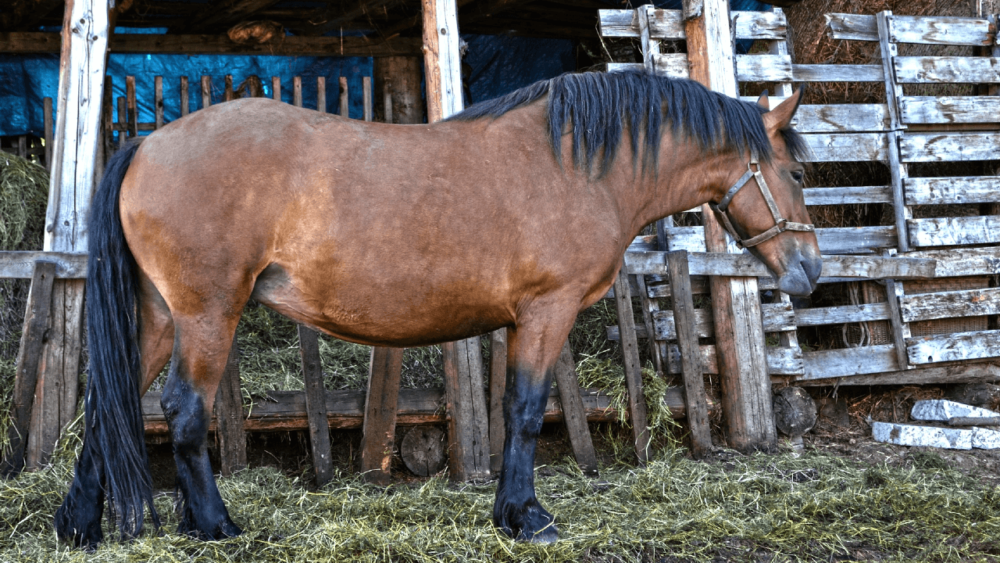Measuring the height of a horse is not an easy prospect, even with valuable tools like measuring sticks and tapes. Horses don’t always stand still. Finding a flat surface for them to stand on is also challenging. It’s little wonder, then, that people have been measuring horses in hands for thousands of years.
Why are horses measured in hands? Ancient societies lacked the measuring tools we have today. Instead, they used their hands to measure the height of a horse. Hands were a fairly universal method of measuring horses and were always accessible.
The average breadth of a man’s hand measures approximately four inches, which became the standard for measuring horses. A 16-hand horse, therefore, would stand 64 inches tall.
How Hands Became the Way to Measure a Horse’s Height
The use of a hand as a measuring tool began in Ancient Egypt. Egyptians struggled to agree on the precise measurement of a hand, however. At some points, a hand was the equivalent of four fingers held flat. At others, it was the width of four fingers, plus the thumb. In around 3,000 BC, the hand was standardized as part of the complex ‘cubit’ system.
How Hands Fitted Into The Egyptian Cubit System
The Egyptian cubit is one of the first standards of linear measurement. Based on the length of a person’s arm, from the elbow to the end of the longest extended finger, it later became standardized and was measured using a cubit stick.
The cubit system was planned but evolved out of widespread usage. It later became a British tradition when, in 1540, King Henry VIII issued a statute defining a hand as four inches.
Despite the king’s decree, some confusion about the size of a hand persisted for years. In The New World of Words: Or, Universal English Dictionary, published in 1706, a palm was defined as “the measure of a hand’s breadth, three Inches,” as was a “hand-breadth.”
When A General Dictionary of Commerce, Trade, and Manufactures was published in 1810, however, a hand had returned to four inches, which is the standard used today when measuring horses.
A horse measured in hands will be described as being a certain number of hands high. This is often abbreviated to hh.
- 14hh means 14 hands high
Other Body Measurements Often Used
While a “hand” means 4 inches, there are other body measurements used over time.
- Hands High: 4 inches per hand
- Cubit: The distance between the elbow and the tip of the middle finger. It’s usually about 18 inches.
- Palm: About 2.5 inches. A cubit is divided into 7 palms.
- Digit: The width of a finger, about 2 CM.
- Span: The distance between the thumb and the pinky finger when the hand is outstretched. This is usually half a cubit.
- Thumb: The width of a thumb, later converted to an inch.
- Fathom: The length of the outstretched arm, about 6 feet. Water is measured in fathoms.
Although body parts are used to measure other things, hands and meters are the most frequent way to measure horses.
The Practicalities of Using Hands To Measure Horses
I’ve heard it said that hands were used because, no matter how much a horse moved around, you could keep the palm of your hand glued to his side. Therefore, using this approach was more accurate than relying on measuring tools like sticks and tapes.
As the equine historian Karin Boniface points out, using hands “is a very practical way of measuring livestock in the field.” From that starting point, a whole infrastructure evolved around hand measurements which are now used in every facet of the horse industry.
Experienced horse owners often memorize standard horse heights using other parts of their anatomy. A friend of mine, for instance, knows that a 15.2hh horse’s withers will be level with her eyes when standing on flat ground.
However, for those new to the horse world, the concept of hands can be confusing. Converting hands into inches and centimeters can help you conceptualize hand heights.
Measure a Horse’s Height From the Withers
A horse’s height is measured at the withers, which is the highest point of the horse’s back. The withers are just below the neck at the highest point on the horse’s back. The height of the withers doesn’t change from the horse’s position.
The withers are also stable. While a horse can arch its back and appear taller than he truly is, the withers are capable of minimal movement, making them more reliable. Similarly, a horse’s head moves up and down all the time, making this unreliable as a point of measurement.
Understanding Horse Height By Hands
You can convert a HH (hand height) to inches to understand how tall a horse is. A hand is 4 inches. But, what do you do if a horse is 4 1/2 hands high? How do you represent partial hands?
Horses can be 16.2hh or 17.1hh. But, beware. Fractional hands are not regular decimals. 16.2hh is not 16 hands plus 1/10th of a hand. A horse that is 16 1/2 hh is not 16.5 hands.
Decimals are used to express partial hands. Therefore, a horse that stands 15.2hh stands 2 inches over 15 hands. In other words, he is 15 x 4 inches (60 inches), plus 2 = 62 inches.
Instead, the decimals used in hands are used to represent inches. 16.2hh means 16 hands plus 2 inches.
- 14.1hh = 14 hands 1 inches
- 16.2hh = 16 hands 2 inches
- 17.3hh = 17 hands 3 inches
Because a hand is 4 inches, you’ll never see a “.4” “.5” or “.6” in hands. 17.4hh would be simply 18hh. 17.6hh would be 18.2hh.
Converting Hands (hh) to Inches
A horse that stands 17hh measures 17 x 4 inches from the ground to the point of the withers. He is therefore 68 inches or 172.72 cm tall.
- 14.1hh = 14 hands, 1 inches (4 x 14=56) + 1 inch = 57
- 16.2hh equals 16 hands, 2 inches (4 x 16=64) + 2 inches = 66
- 17.2hh equals 17 hands, 2 inches (4 x 17=68) + 2 inches = 70 inches
How To Measure A Horse’s Height In Hands
Assuming the breadth of your hand is four inches wide, you can measure a horse using only your hands. Unfortunately, some women’s hands are too small. Mine, for example, measures just three inches if I exclude the thumb but, if I press my thumb against the bottom of the index finger, it increases the width to four inches.
My hands are, therefore, ideal for measuring a horse in hands. When I measure my horse using my hands, he stands around 15.2hh. When I measure with a tape, 15.1hh. This slight discrepancy doesn’t matter much to me, but it would if I wanted to compete on him or was attempting to sell him
To gauge your horse’s height in hands, follow this photo tutorial:
#1 Stand your horse on level ground
#2 Take a tape measure and slot the metal tip at the end under your foot
#3 Pull the tape measure up until it’s level with the highest point of your horse’s withers
#4 Use a stick or bubble level to make the reading more accurate. Rest the level on the horse’s withers and then extend the tape measure vertically until it touches the bottom of the level. This will give a more accurate indication of your horse’s height.
My horse measures approximately 155 cm tall, which is the equivalent of 61 inches, making him 15.1hh.
While this is one of the common ways of measuring a horse’s height, it’s not always 100% accurate.
The conversion table below will help you convert your measurements.
Horse Height Conversion Table
| Hands | Inches | Meters |
| 10 | 40 | 1.02 |
| 10.2 | 42 | 1.07 |
| 11 | 44 | 1.12 |
| 11.2 | 46 | 1.17 |
| 12 | 48 | 1.22 |
| 12.2 | 50 | 1.27 |
| 13 | 52 | 1.32 |
| 13.2 | 54 | 1.4 |
| 14 | 56 | 1.42 |
| 14.2 | 58 | 1.47 |
| 15 | 60 | 1.52 |
| 15.2 | 62 | 1.57 |
| 16 | 64 | 1.63 |
| 16.2 | 66 | 1.68 |
| 17 | 68 | 1.73 |
| 17.2 | 70 | 1.78 |
| 18 | 72 | 1.83 |
The Purpose And Complexities of Official Height Certificates
Some competition organizers require horses to have an official height measurement recognized by the Joint Measuring Board in the UK. Established in 1934, the JMB is “dedicated to the accurate measuring of the relaxed height of horses and ponies.”
The rules for performing an official are lengthy and complicated. Only Official Measurers can issue a height certificate and, to get one, your horse needs to:
- Stand with its front feet in line and its hind feet no more than 15cm out of line with each other;
- Stand in a relaxed position with its head approximately level, but not lower, than its withers;
- Stand on the Measuring Pad for at least 20 minutes.
As you can see, this is a far more complex process than the one we demonstrated but should produce the most accurate measurement available. Rather than relying on a tape measure, officials use measuring sticks to get the most precise height possible.
Take various factors that can influence your horse or pony’s height into account. For example, if your horse wears shoes, these can add a couple of centimeters to his final height. As a result, some competition organizers require you to measure your horse or pony’s height without shoes.
Muscle exertion can also add a centimeter or two to your pony’s height, which can make official measuring at competitions particularly stressful for those with borderline ponies standing 150cm tall.
FEI Height Restrictions For Competition Ponies
For those competing in Fédération Équestre Internationale (FEI) events, the maximum height allowed for a pony is 150cm without shoes. That’s only for competition, however. The maximum height outside of competition is two centimeters shorter at 148cm.
Because the conditions for measuring ponies at these events are often far from perfect, there have been a few controversial decisions over the years. The FEI has since introduced a 2-cm leeway, which is designed to compensate for uneven surfaces and the effect of competitive pressures on the pony’s height.
The Best Tools For Gauging Your Horse’s Height
A Measuring Stick Is the Most Accurate Way of Establishing your Horse’s Height
A measuring stick is the most accurate way of establishing how tall your horse is. An aluminum measuring stick is durable yet lightweight, making it easy to use. The best measuring sticks also come with an adjustable arm with a built-in bubble level. Rest this on your horse’s withers, ensuring its level, and it will give you an accurate measurement of any horse up to 180cm, or 17.3hh.
A Tape Measure is Useful for Judging a Horse’s Height and Weight
Height/weight tapes help establish if your horse is at a healthy weight. Such tapes can help you manage a fat horse more effectively or start figuring out how to bulk up an underweight horse with muscle and weight.
The best horse hand pony height/weight tapes are made of durable nylon so that they won’t stretch or break. On one side, it will estimate your horse’s weight in both pounds and kilograms. On the other side, it measures your horse’s height in hands and centimeters.
You Can Still Use Hands to Measure a Horse’s Height
If your own hands are too small, ask someone with larger hands to assist you. Placing your palm against the horse as shown below, place your other hand next to it. Continue until you reach the withers. Multiply the number of “hands” by the width of the hand in question. If it’s four inches wide, this method will give you a relatively accurate indication of your horse’s height.
Measuring my horse in this way gave me a reading of 15.2hh, which wasn’t far off the measurement I got using a tape measure.
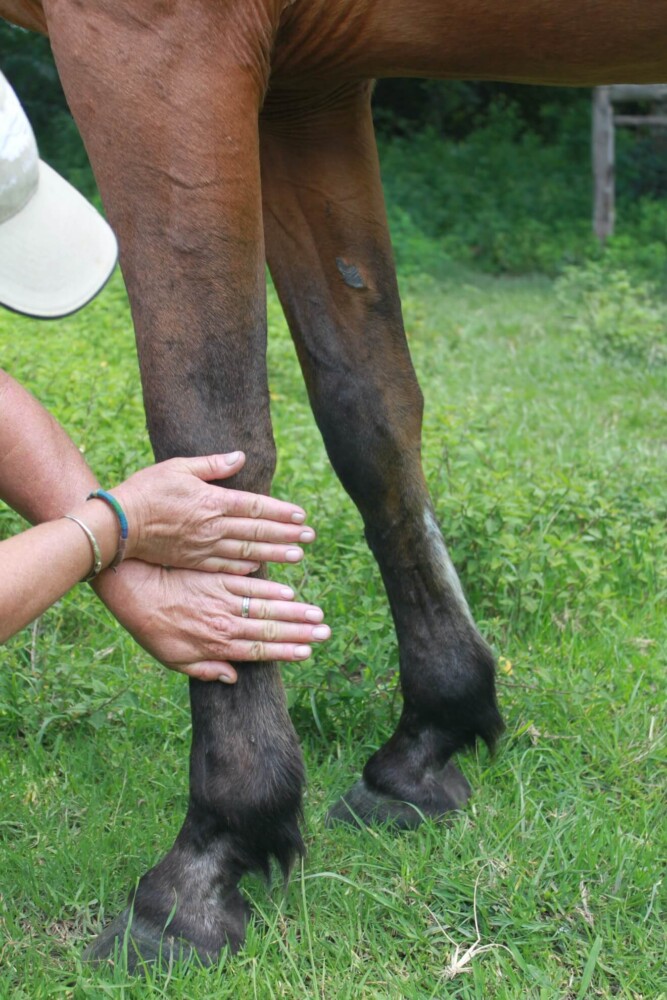
10 Common Horse Breeds and Their Average Heights
| Breed | Minimum Average Height | Maximum Average Height |
| American Quarter Horse | 14hh | 16.2hh |
| Appaloosa | 14hh | 15hh |
| Arabian | 14.1hh | 15.2hh |
| Haflinger | 14hh | 15hh |
| Mustang | 12hh | 14.2hh |
| Paint | 14hh | 16hh |
| Percheron | 15.2hh | 17.1hh |
| Tennessee Walking Horse | 14.3hh | 15.3hh |
| Thoroughbred | 15.2hh | 17.2hh |
| Welsh Pony | 12hh | 13.1hh |
What are the Shortest Horse Breeds?
A small breed is one in which the horses average a height of 5 to 14.25hh. If a horse breed exceeds that maximum, it is no longer considered a small breed.
Measuring between 6.25hh and 8.5hh, the Falabella is the shortest horse breed in the world.
The Falabella was first registered in Argentina in 1940 after generations of selective breeding by the Falabella family. Introducing other bloodlines to the smallest of the wild herds roaming the Buenos Aires region, the Falabellas produced a breed of miniature yet well-structured horses.
While the Falabella is the smallest breed, it’s a miniature Appaloosa that holds the Guinness World Record for the shortest living horse. Bombel lives in Poland and measures just 22.36″, or just over 5hh.
Other small horse breeds include the Miniature Horse, Shetland pony, and Haflinger, alongside lesser-known ones like the Icelandic Horse, the Fford, and the endangered Noma Pony from Japan.
What are the Tallest Horse Breeds?
Shire horses are considered the biggest breed globally and usually stand between 16.2 and 19hh. The largest horse ever documented was a Shire called Sampson, born in 1846 in Bedfordshire, UK. He stood an impressive 21.2½ hands and weighed over 3,300lb.
The other tallest breeds are also draft horses and include the Clydesdale, Percheron, and Belgian, which stand between 16 to 18hh.
Despite their impressive size, the Shetland can out-perform any of them when it comes to pulling a cart. Draft horses can pull three times their body weight, but the Shetland.
You can find out more about how much weight a horse can pull here, or check out our article on the best pony breeds to learn more about the Shetland’s talents.
Do Taller Horses Run Fast?
The stride rate, length, and angle dictate a horse’s top speed more than height. Many believe that the legendary racehorse, Secretariat, not only had a huge heart, but he also had a stride angle of 110°.
A wider stride angle means a longer stride, and Secretariat’s was huge. Covering over 25′ with every stride, Secretariat raced to victory at the Belmont Stakes in 1973. He ran 1.5 miles in just 2.24 minutes, setting a world record that still stands today.
Secretariat wasn’t a particularly tall horse, standing around 16.2hh. Compared to the Australian racing world giant, Shinshinto, who stands 18.2hh, that’s not very tall.
However, despite his height, Shinshinto’s performance on the track is nowhere near Secretariat’s. He’s won just 23 % of his races, proving that it isn’t always the size that counts!
Some of the world’s fastest horses were even smaller than Secretariat. Seabiscuit, for example, stood just 15.2hh. Most famous for his win over War Admiral at Pimlico in 1937, Seabiscuit also set the San Juan Capistrano Handicap’s track record that year, covering 11⁄8 mile in 1:484⁄5 minutes.
As you can see, it’s not always the tallest horses that run the fastest. A horse needs a long stride, reasonable stride rate, and high stride angle to run fast. Good airflow, a strong heart, and superb muscle tone are also crucial.
Conclusion
Horses were around for a long time before tape measures and other modern measuring devices. Hands are the standard for measuring a horse, with each hand representing four inches. Although there are now more accurate ways of measuring your horse’s heights, the horse world still relies on hands to measure a horse’s height.
My Favorite Equine Resources For Horses and Donkeys
This list contains affiliate products. Affiliate products do not cost more but helps to support BestFarmAnimals and our goal to provide farm animal owners with accurate and helpful information.
Squeaky Chicken Toy is hilarious to watch and the horses love it! It’s not super tough so keep it away from dogs.
Dewormer with Ivermectin: I use this for my horses and my goats. Duvet makes a great dewormer. I switch between the Ivermectin one and one like this one so the worms don’t get immune to it.
Manna Pro Apple Flavored Nuggets are a delicious smelling treat that my horses go crazy over.
Equinity Amino Acid Supplement for Horses makes a big difference for any horse that’s struggling with arthritis, hoof issues, or just generally. It’s great for older horses who can’t absorb all the nutrients in their food as well!
Manna Pro Weight Accelerator helps older horses gain weight and stay healthier! This was especially helpful when one of my older horses lost weight over the winter and helped her regain her weight over the summer!
Farnam Fly Control goes on the horse or donkey and will keep the flies off your sweet pet. It makes horses way more comfortable and will keep sores from getting infected as well.
Wound Kote protects sores and wounds. It acts as an antiseptic and helps wounds heal faster. It works on both my horses and goats.

